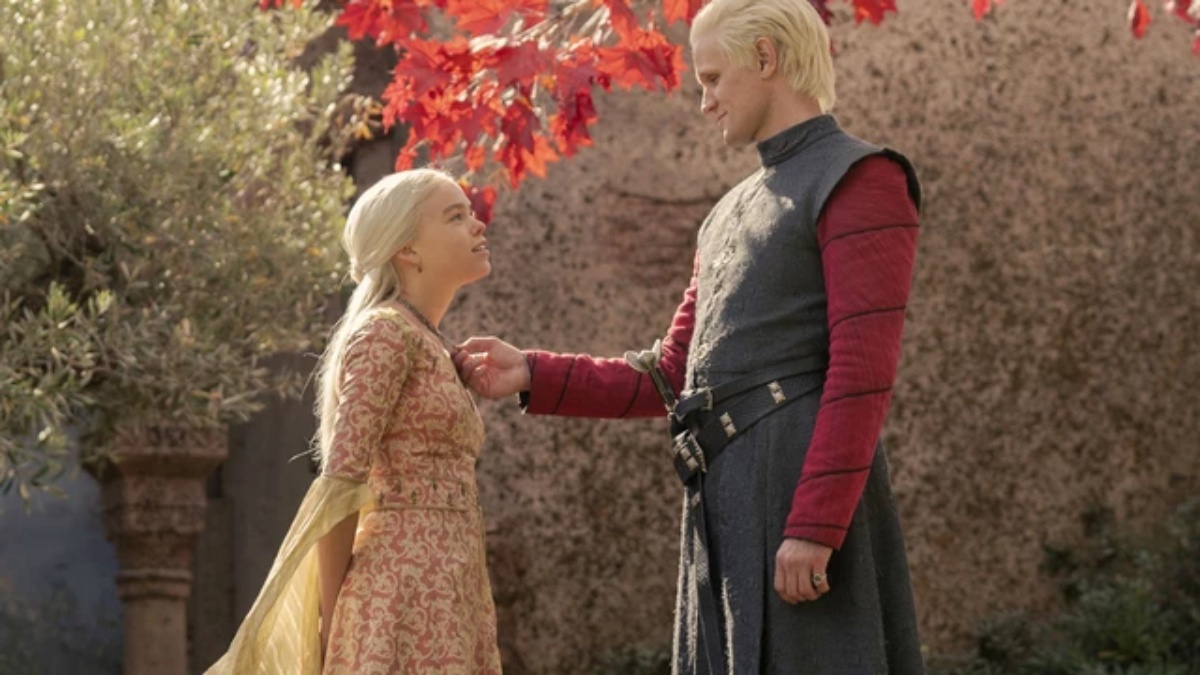A Brief History of Targaryen Incest

Spoilers for House of the Dragon
Well, we (especially George R.R. Martin book readers) knew it was coming. From the start of House of the Dragon, Prince Daemon (Matt Smith) and his niece Princess Rhaenyra (Milly Alcock) had fantastic chemistry that hinted at the fact the fact that the two were going to engage in something “sexual.” In a recent episode, we saw Daemon giving his niece an … education about sex and pleasure. One that left their relationship unconsummated but edged them closer to danger and displeasure from the Crown.
But it is essential to keep in mind that the reason why people in court oppose a sexual union between Daemon and Rhaenyra has nothing to do with incest and everything to do with patriarchy.
Let’s back up a little bit. So within the teachings of the Faith the Seven, one of the pantheons of Gods in Westeros, incest is seen as an abomination. This is why Cersei and Jaime being together in the original Game of Thrones series is seen as such a taboo. Within the religious sections of the country, it is very much an abomination. The Targaryens have been (overall) an exception.
Aegon the Conqueror had two sister wives, Queen Visenya Targaryen and Queen Rhaenys Targaryen. Due to their power and dragon control, the religious order allowed for it. In their ancestral homeland of Valyria, the practice of incestuous marriage was normalized, so it was a tradition that was carried on to Westeros.
That calm between the two cultures broke when Aegon’s two sons, King Aenys I Targaryen and King Maegor I Targaryen, challenged the religious order. King Aenys married his son and daughter to each other, and King Maegor took six wives in total. This led to the High Septon denouncing Aenys as a “King Abomination.” It started a Faith Militant uprising that lasted until King Jaehaerys I, also known as Jaehaerys the Conciliator, promised that the Crown would always protect and defend the Faith.
Despite at times marrying outside of the line, the tradition of incestuous Targaryen marriage has continued and has been considered linked to the trait of “madness” that exists within the line, as well as the inability of their line to produce children. Much like their historical counterparts, the House of Habsburg’s inbreeding does lead to long-term health consequences and a decline in fertility.
Jaehaerys went on to marry his sister Alysanne. Viserys I and Queen Aemma were cousins. And to not spoil too much, we can even go to Daenerys’s parents, who were brother and sister themselves. Even when there were kings who did not favor incest pairings like, Aegon V Targaryen aka Egg, it wouldn’t stop their children from indulging in the practice.
All this to say that if Rhaenyra were a man, she would be able to have as many lovers as she would like and it would be of no consequence, including her uncle. The fact that she is a woman supersedes everything else about her rank and power to the point where her sexual desires become so important for the rest of the story.
As always, I continue to root for Rhaenyra and her wrongs, because she isn’t doing anything the men aren’t doing.
But I can blame the chemistry bween Alcock and Smith for making people thirst for a uncle-niece paring on the main. The AO3 tags are about to be spicy.
(image: HBO)
Have a tip we should know? tips@themarysue.com